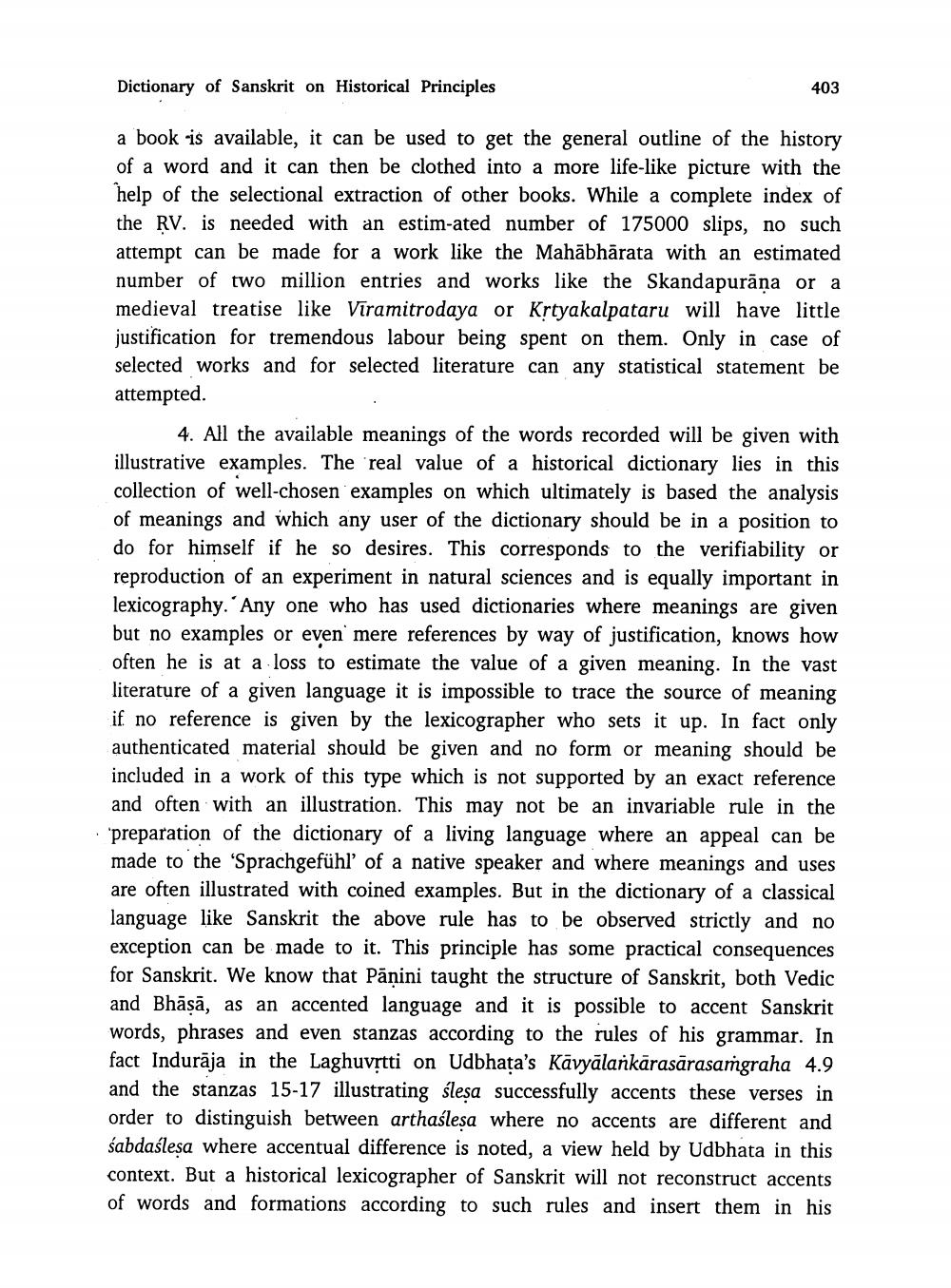________________
Dictionary of Sanskrit on Historical Principles
403
a book is available, it can be used to get the general outline of the history of a word and it can then be clothed into a more life-like picture with the help of the selectional extraction of other books. While a complete index of the RV. is needed with an estim-ated number of 175000 slips, no such attempt can be made for a work like the Mahābhārata with an estimated number of two million entries and works like the Skandapurāņa or a medieval treatise like Viramitrodaya or Krtyakalpataru will have little justification for tremendous labour being spent on them. Only in case of selected works and for selected literature can any statistical statement be attempted.
4. All the available meanings of the words recorded will be given with illustrative examples. The real value of a historical dictionary lies in this collection of well-chosen examples on which ultimately is based the analysis of meanings and which any user of the dictionary should be in a position to do for himself if he so desires. This corresponds to the verifiability or reproduction of an experiment in natural sciences and is equally important in lexicography. Any one who has used dictionaries where meanings are given but no examples or even mere references by way of justification, knows how often he is at a loss to estimate the value of a given meaning. In the vast literature of a given language it is impossible to trace the source of meaning if no reference is given by the lexicographer who sets it up. In fact only authenticated material should be given and no form or meaning should be included in a work of this type which is not supported by an exact reference and often with an illustration. This may not be an invariable rule in the preparation of the dictionary of a living language where an appeal can be made to the 'Sprachgefühl of a native speaker and where meanings and uses are often illustrated with coined examples. But in the dictionary of a classical language like Sanskrit the above rule has to be observed strictly and no exception can be made to it. This principle has some practical consequences for Sanskrit. We know that Panini taught the structure of Sanskrit, both Vedic and Bhāṣā, as an accented language and it is possible to accent Sanskrit words, phrases and even stanzas according to the rules of his grammar. In fact Indurāja in the Laghuvṛtti on Udbhata's Kāvyālaňkārasārasaṁgraha 4.9 and the stanzas 15-17 illustrating slesa successfully accents these verses in order to distinguish between arthaślesa where no accents are different and sabdaślesa where accentual difference is noted, a view held by Udbhata in this context. But a historical lexicographer of Sanskrit will not reconstruct accents of words and formations according to such rules and insert them in his




